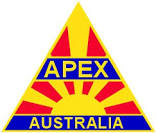Radiosondes

Since the weather we experience is due to dynamic processes that take place throughout the atmosphere, we need to know what is taking place through the entire atmosphere. These observations are primarily taken with the aid of radiosondes.The radiosonde is a small, expendable instrument package that is suspended below balloon filled with either hydrogen or helium. As the radiosonde rises, sensors on the radiosonde measure values of pressure, temperature, and relative humidity.
These sensors are linked to a battery powered radio transmitter that sends the sensor measurements to a ground receiver. By tracking the position of the radiosonde in flight via GPS (global positioning system), information on wind speed and direction aloft is also obtained.
Worldwide, most radiosonde observations are taken at 00Z and 12Z daily (What is ‘Z’ time?). With worldwide coordination of these upper air observations we can get a good picture of the various pressure and wind patterns across the globe. For the United States mainland observation sites, the local times for these observations are centered around 6 AM and 6 PM daily.
Technically, a radiosonde observation provides onlypressure, temperature, and relative humidity data. When the position of a radiosonde is tracked (so that wind speed and direction can be determined) it is called a rawinsonde observation.Most stations around the world take rawinsonde observations. However, meteorologists and other data users frequently refer to a rawinsonde observation as a radiosonde observation.
The radiosonde flight can last in excess of two hours, and during this time the radiosonde can ascend to over 115,000 feet (35,000 m) and drift more than 125 miles (200 km) from the release point. During the flight, the radiosonde is exposed to temperatures as cold as -130°F (-92°C) and air pressure of only a few hundredths of what is found on the Earth’s surface.
When the balloon has expanded beyond its elastic limit (about 20 feet in diameter) and bursts, the radiosonde returns to Earth via a small parachute. This slows its descent, minimizing the danger to life and property.
If found, radiosondes can be reconditioned and used again saving the taxpayer some money. If you find a fallen NWSradiosonde, it is safe to handle. Cut the string to the burst balloon and place it in a trash receptacle.
Next, remove the plastic mailbag attached to the handle of the radiosonde and place the instrument inside the bag. Hand the package to your postal carrier. Postage is prepaid if the instrument is returned in the United States.Worldwide, there are about 1,300 upper-air stations. Observations are made by the NWS at 92 stations – 69 in the conterminous United States, 13 in Alaska, nine in the Pacific, and one in Puerto Rico.NWS supports the operation of 10 other stations in the Caribbean. Through international agreements data are exchanged between countries worldwide.
How Are Radiosonde Data Used?
Radiosonde observations are used over a broad spectrum of efforts including:
- Input for computer-based weather prediction models,
- Local severe storm, aviation, and marine forecasts,
- Weather and climate change research,
- Input for air pollution research, and
- Ground truth for satellite data.
Data from a radiosonde observation is plotted on a seemingly complicated chart called a “Skew-T” but provides is a wealth of information concerning the state of the atmosphere.


